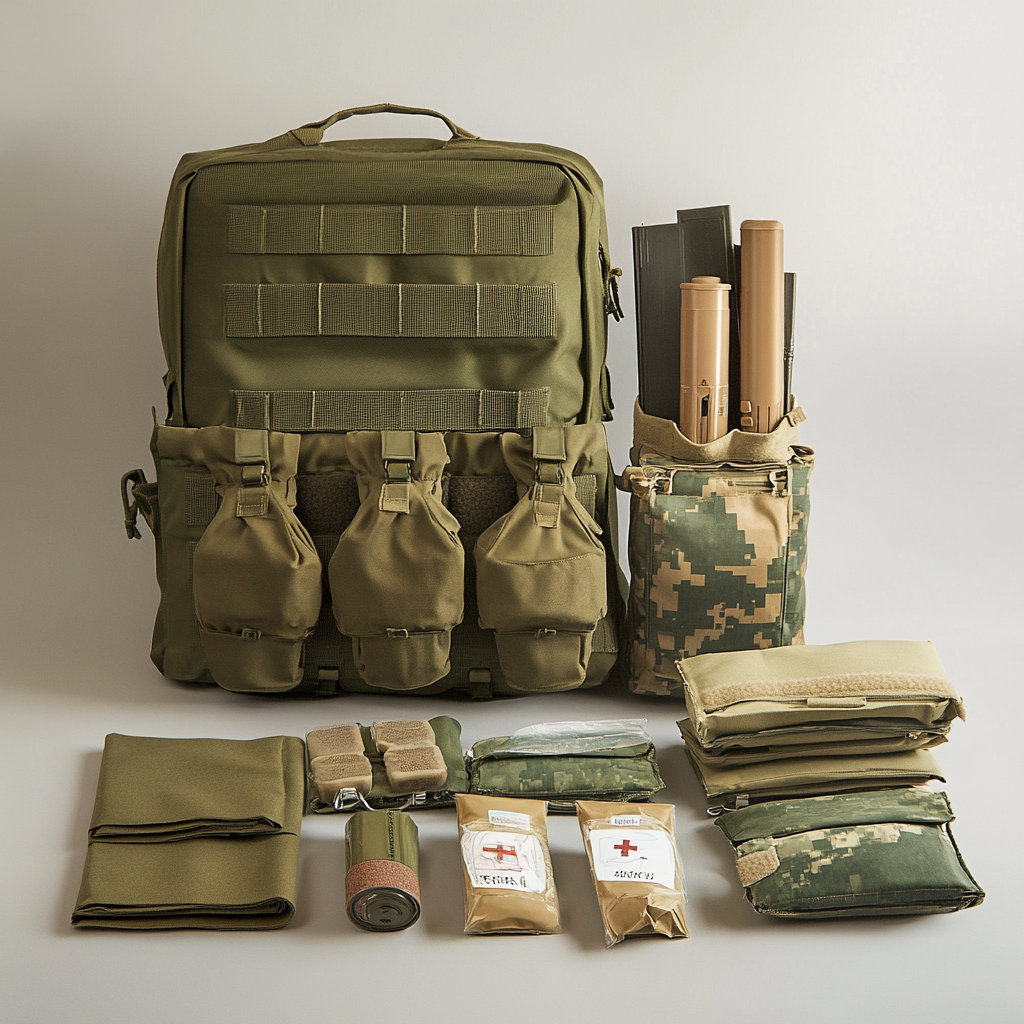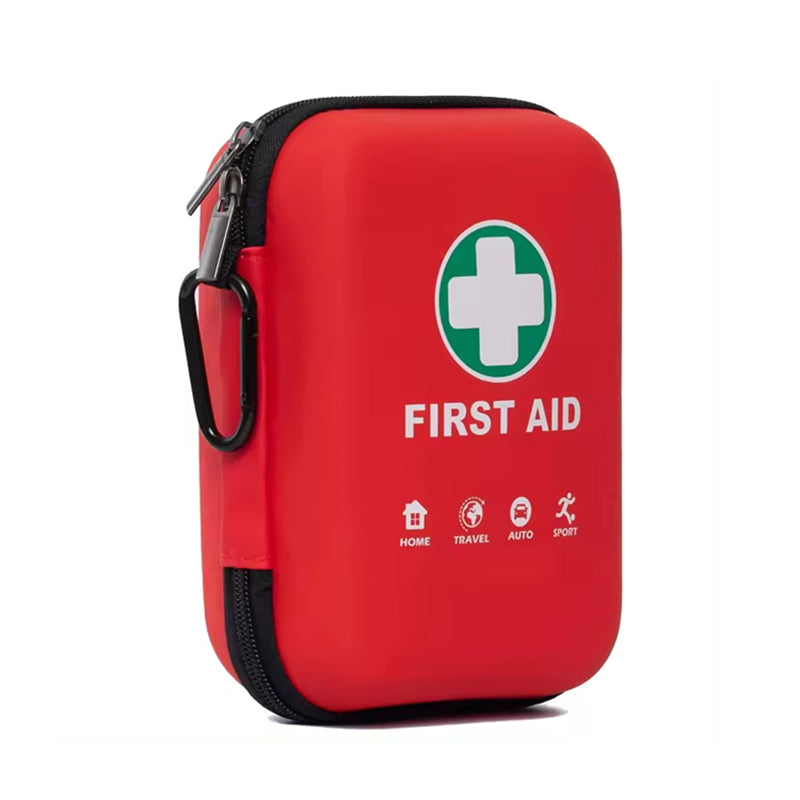War First Aid Kit Procurement Guide

In combat, the first aid kit is an essential tool that can mean the difference between life and death for soldiers. It provides immediate care for the injured and buys precious time for professional medical intervention. This article outlines the importance of wartime first aid kits, their core components, design features, selection criteria, usage tips, and common battlefield injuries with recommended responses.For a closer look at our military-grade first aid kits, check out the product page here.
Definition and Importance of Wartime First Aid Kits
1. Function and Necessity
Wartime first aid kits are designed to address the emergency medical needs of soldiers on the battlefield. Their primary functions include controlling bleeding, bandaging wounds, immobilizing fractures, and treating burns. Soldiers face life-threatening injuries, such as gunshot wounds, shrapnel, and stab wounds, that can lead to severe blood loss or infection. These kits are crucial in providing immediate relief, improving survival chances significantly.
For example, a tourniquet can stop bleeding, preventing life-threatening blood loss; bandages protect wounds from infection; antibiotics help treat wounds, and disinfectants reduce infection risks.
2. The Critical Role in Emergencies
In warfare, time is critical. A wartime first aid kit allows rapid treatment, which can stabilize the injured long enough for them to reach advanced medical care. Without quick action, wounds may worsen, become infected, or prove fatal. A well-equipped first aid kit not only provides immediate medical relief but also boosts soldier morale. Knowing they can receive prompt treatment increases soldiers' confidence and readiness in battle.
3. Differences from Everyday First Aid Kits
Wartime first aid kits differ significantly from those used in daily life. These kits are tailored for extreme conditions and combat-related injuries.
-
Content: Wartime kits contain specialized items like tourniquets, antiseptics, antibiotics, and disinfectants. In contrast, daily kits focus on basic medical supplies such as pain relievers and disinfectants for minor injuries.
-
Design: Wartime kits prioritize portability, durability, and waterproofing to withstand harsh environments. They are compact, lightweight, and can endure extreme temperatures, humidity, and vibrations. Waterproofing is critical to protect the contents from moisture damage.
Core Items in Wartime First Aid Kits
- Tourniquet
- Band-Aids
- Antiseptic Medications
- Bandages
Used to dress wounds or immobilize fractures, bandages are often made from gauze or cotton. They are soft, breathable, and absorbent, which helps control bleeding and prevent further damage to injuries.
- Antibiotics
- Wound Disinfectant
Characteristics and Design of Wartime First Aid Kits
1. Waterproofing
In battle, unpredictable weather can jeopardize the effectiveness of medical supplies. Waterproof first aid kits protect their contents from water damage, ensuring that essential items remain functional in the most extreme conditions. Waterproof materials like nylon or EVA are commonly used to create durable, watertight containers.
2. Portability
The portability of a wartime first aid kit is crucial. It needs to be compact and lightweight, allowing soldiers to carry it easily. Many kits come with straps, allowing them to be worn or carried without hindering mobility.
3. Durability
First aid kits must withstand external forces like gunfire, explosions, and impacts. Kits are often made from high-strength materials such as nylon or EVA, with added layers for impact resistance and durability.
4. Material Selection
Durable, lightweight, waterproof materials are key. Nylon and EVA are preferred for their strength, water resistance, and ability to withstand harsh environments.
Choosing the Right Wartime First Aid Kit
- Purpose (Individual vs. Team Use)
- Portability
- Space Efficiency
- Product Certification
Tips for Using Wartime First Aid Kits
1. Efficient Use on the Battlefield
- Rapid Injury Assessment: Soldiers must quickly assess the severity of an injury. Minor wounds may require only Band-Aids, while severe injuries, such as hemorrhaging or fractures, require immediate use of a tourniquet or bandage.
- Correct Application: Follow proper procedures for each item. For example, apply a tourniquet 5-10 cm above the wound, ensuring it is neither too tight nor too loose.
- Stay Calm: In stressful situations, remaining calm is crucial for effective treatment. Panic can lead to errors in judgment and application.
2. Storage and Maintenance
- Regular Inspection: Check the contents regularly to ensure everything is in working order and replace expired or damaged items.
- Keep Dry: Store the kit in a dry area to prevent moisture damage.
- Avoid Extreme Temperatures: High and low temperatures can degrade medications and other materials, so keep the kit away from temperature extremes.
- Regular Cleaning: Clean the kit's exterior to maintain hygiene and functionality.
Common Battlefield Injuries and Responses
- Bleeding
- Fractures
- Burns
Conclusion
A wartime first aid kit is designed to address the unique and extreme needs of the battlefield. From bleeding control to fracture immobilization, each item plays a crucial role in ensuring survival until more advanced medical help can be provided. When selecting a kit, factors like portability, material strength, and design should be prioritized to ensure that it meets the demanding conditions of combat.Don’t wait until it's too late—shop now for military first aid kits designed for combat situations.
